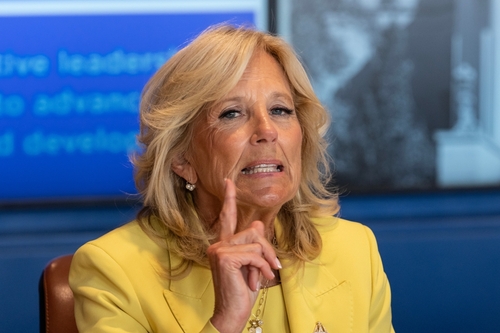
In the intricate dance of politics and power within Washington D.C., there is often more than meets the eye, especially when it comes to the influence wielded within the inner circles of the White House. One figure that has traditionally held a significant yet understated role is the First Lady of the United States. Behind the facade of ceremonial duties and social responsibilities, the president’s spouse has, in many administrations, been a key advisor and confidante.
Throughout history, the contributions and influence of First Ladies have been significant, yet frequently overlooked or underestimated. They have often acted as the president’s first sounding board, offering counsel on a wide array of matters. This support network is vital to the presidency, offering solace during trying times and guidance amidst the storm of governance.
The word on the street is Jill Biden "loves power" and refuses to leave the White House. pic.twitter.com/IifcF0jEyW
— Brently𝕏 (@kopopoulous) February 23, 2024
In the current administration, there are indications that the First Lady’s role in political decision-making has evolved beyond the traditional confines of the position. Far from simply hosting state dinners and championing social causes, she is believed to be a pivotal figure in the day-to-day operations and strategic planning at the Oval Office, helping to shape policy on both domestic and international fronts.
Analysts suggest that the First Lady’s professional background brings a unique perspective to the West Wing, one that can potentially blend the empathy of an educator with the resolve of a seasoned policymaker. This dual capability may serve as both an asset and a source of robust influence within the executive branch, impacting decisions that reach far beyond the expected scope of her ceremonial role.
I can't imagine loving someone and putting them through what Jill Biden is putting her husband through.
Elderly abuse is what we all see. Jill benefitted from the Biden crime sprees. Jill Biden needs to be held accountable. https://t.co/NRnvpsD6pm
— Wendy Patterson (@wendyp4545) February 23, 2024
Moreover, the degree of her involvement raises questions about transparency and accountability in the administration. The complexities of governance necessitate clear lines of responsibility and the assurance that elected officials are at the helm of key decisions. When unelected individuals assume significant advisory roles, it challenges these principles and warrants close scrutiny.
Advocates for more active roles for First Ladies might argue that this influence is a natural extension of the support system a president needs. However, critics are wary of the lack of checks and balances associated with such access and potential sway, emphasizing the need for advisors to undergo rigorous vetting processes, something from which the First Lady is traditionally exempt.
To reconcile these perspectives, it may be prudent to consider a formal acknowledgment of the First Lady’s role within the administration, which would allow for a transparent framework governing her participation in policy deliberations. This could help maintain the integrity of the administrative process while still leveraging the unique contributions the First Lady can offer based on her experiences and insights.
In conclusion, the involvement of the First Lady in the mechanics of government is a tradition as old as the presidency itself. However, the extent of this involvement and its implications for governance remain a topic of ongoing debate. As observers of the political landscape weigh in on this phenomenon, the discussion around the proper role and influence of the president’s spouse in matters of state continues to evolve, reflecting the dynamic and ever-changing nature of American democracy.










